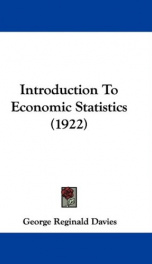social environment

Purchase of this book includes free trial access to www.million-books.com where you can read more than a million books for free. This is an OCR edition with typos. Excerpt from book: life flews, so to speak, into progressively divergent forms. In the process of time the innumerable species and varieties of the vegetable and animal world spring into being. A third biological principle is the inevitable struggle for survival that arises from the conflicting interests of the different forms of life. Increase being at a rapid geometric rate 2, 4, 8, 16, 32, etc. it is obviously impossible for all to find food, so there ensues a strenuous competition in which the weaker starve or become food for others. A fourth principle, the survival of the fittest, naturally follows. The strong, the swift, the cunning, the capable that arise out of the chaotic conflict stand forth as higher creations to enjoy for a brief time the fruits of their victory, until the rising tide of competition in turn overwhelms them. Nature's apparent aim is fulfilled in the survival of the fittest, in a progressive series. The losers the unfitare forced backward toward oblivion, perhaps to attain a degree of usefulness in becoming food for their betters. 2. Early Stages of Evolution In accordance with these principles the biologist pictures world history for us in somewhatthe following guise. The first forms of life to emerge from the inanimate were simple vegetable types. The peculiarity of the vegetable world is that it has the power to take the inorganic elements of nature and convert them into its own substance; that is, it sturdily makes its own living by elaborating its tissues from the raw material of inanimate nature. The animal world emerged from the vegetable when in the competition for a livelihood some of the primitive forms discovered a convenient short cut to success in preying upon their kin. The animal world is, therefore, secondary to the vegetable world, living as...
Info about the book
Author:
Series:
Unknown
ISBN:
1112016457
Rating:
4.5/5 (4)Your rating:
0/5
Languge:
English
Users who have this book
Users who want this book
What readers are saying
What do you think? Write your own comment on this book!
write a commentif you like social environment try:
Other books by this author
Do you want to exchange books? It’s EASY!
Get registered and find other users who want to give their favourite books to good hands!


